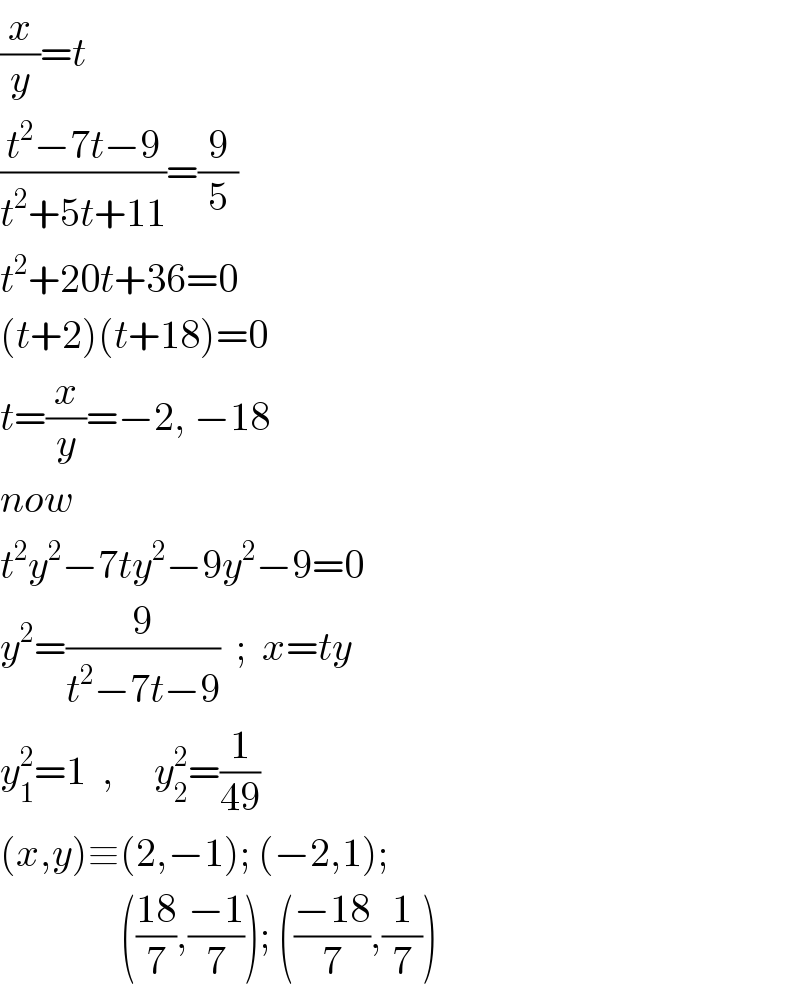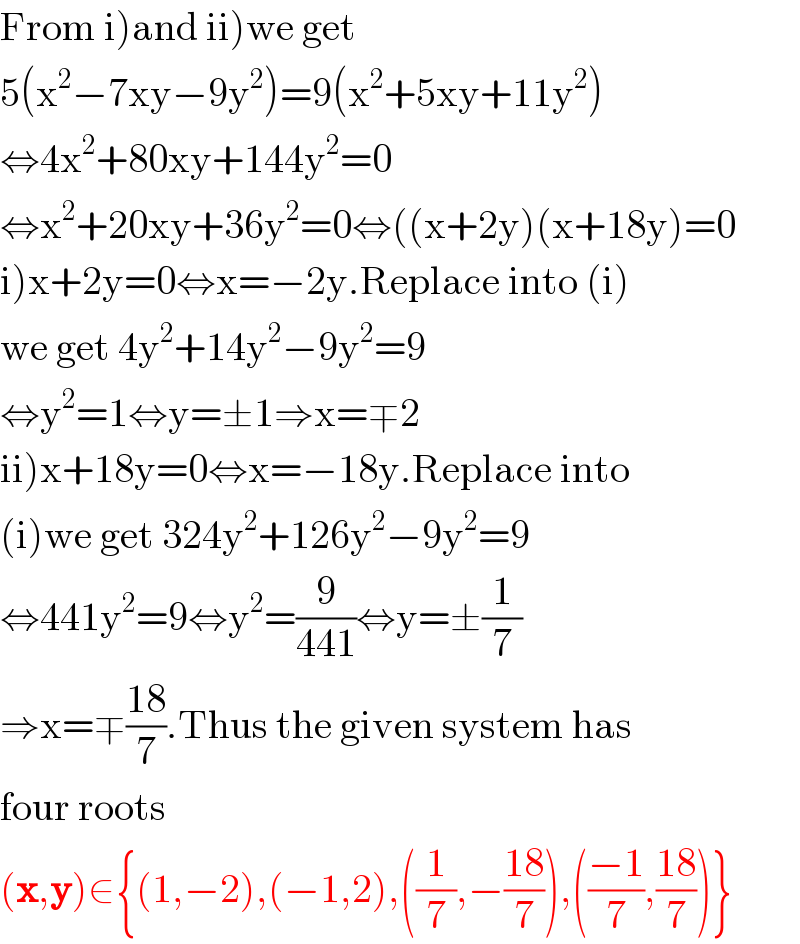
Question and Answers Forum
Question Number 112050 by naka3546 last updated on 05/Sep/20

Answered by ajfour last updated on 05/Sep/20

Answered by MJS_new last updated on 05/Sep/20

Answered by 1549442205PVT last updated on 06/Sep/20

| ||
Question and Answers Forum | ||
Question Number 112050 by naka3546 last updated on 05/Sep/20 | ||
 | ||
Answered by ajfour last updated on 05/Sep/20 | ||
 | ||
| ||
Answered by MJS_new last updated on 05/Sep/20 | ||
 | ||
| ||
Answered by 1549442205PVT last updated on 06/Sep/20 | ||
 | ||
| ||